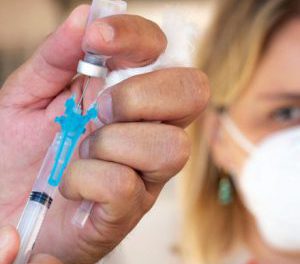Read Time:3 Minute, 41 Second
Hospitals in some countries and areas in the Western Pacific Region are under pressure as cases of coronavirus disease 2019 (COVID-19) surge.
In response, the World Health Organization (WHO) has updated its interim guidance for countries and areas in the Region to support health systems under pressure and those continuing to prepare for a rise in cases. The publication – on managing hospital services, maintaining essential routine health care and generating surge capacity – provides guidance to national and subnational health authorities, senior decision-makers, and hospital administrators and staff.
The main principles for actions in hospitals are:
• manage the COVID-19 caseload, including surge capacity,
• maintain continuity of essential services,
• ensure good coordination at every level,
• provide clear and accurate internal and external communication,
• make efficient use of scarce resources and swiftly adapt to increases in demand, and
• create a safe environment for hospital staff.
The guidance joins an extensive range of WHO guidance to hospitals and health systems on managing COVID-19.
Hospitals under pressure
At Port Moresby General Hospital, a surge of patients and health worker infections are putting pressure on the wards, said Glen Mola, Professor of Obstetrics, Gynaecology and Reproductive Health at the School of Medicine of the University of Papua New Guinea.
“If the number of new infections is such that there are too many people for our health system to cope with, the health system will collapse. It will literally collapse,” Professor Mola warned in a powerful Facebook video encouraging health workers to be vaccinated and asking people to wash their hands, wear masks, practise physical distancing and follow other official advice to prevent transmission.
WHO Regional Director for the Western Pacific Dr Takeshi Kasai said, “Most countries have avoided the so-called red line, or the point where critical care needs surpass health-care capacity, large numbers of health-care workers are infected, service quality declines and deaths rapidly increase.
“Recently, however, COVID-19 cases have risen – in some places to record levels – and there are reports of hospitals reaching capacity. Even where the epidemic is controlled, and well below the ‘red line’, hospitals must continue to play their critical role caring for COVID-19 patients while maintaining their usual essential services,” he added.
Continued vigilance as vaccines roll out
The updated publication comes as COVID-19 vaccines arrive in the Western Pacific Region. These vaccines will help prevent severe infections and deaths, but they are not a single or simple solution, as it will still be many months before enough people are vaccinated to have an impact on the spread of the virus.
For the foreseeable future, countries must continue being vigilant and individuals must continue with proven preventive measures such as cleaning hands, wearing masks, physical distancing, and avoiding crowds, close-contact settings and confined spaces.
WHO partners with governments to strengthen health systems
COVID-19 has revealed the critical role of strong health systems for stopping transmission and for social and economic well-being. The devastating impact of the pandemic is a reminder of the need for countries to continue to strengthen their hospital and health-care capacity as well as public health systems, making the right investments now for a safer and healthier future.
Countries in the Region have spent more than a decade strengthening their health systems to prepare for events with pandemic potential, with the support of WHO, the European Union, Australia, Japan, the Republic of Korea and other partners.
Data to drive decisions about hospital capacity
Accurate and timely data are crucial to identify risks early and manage hospital demand. In the Lao People’s Democratic Republic, for example, WHO has supported the Government to rapidly develop and roll out a tablet-based system to collect information on the utilization of resources such as beds in COVID-19 wards and intensive care units (ICU), as well as ventilators and health workers in designated COVID-19 facilities.
In the Philippines, WHO worked with the Department of Health and developers to create the KAYA app and database, which help with surveillance, contact tracing and managing hospital beds.












